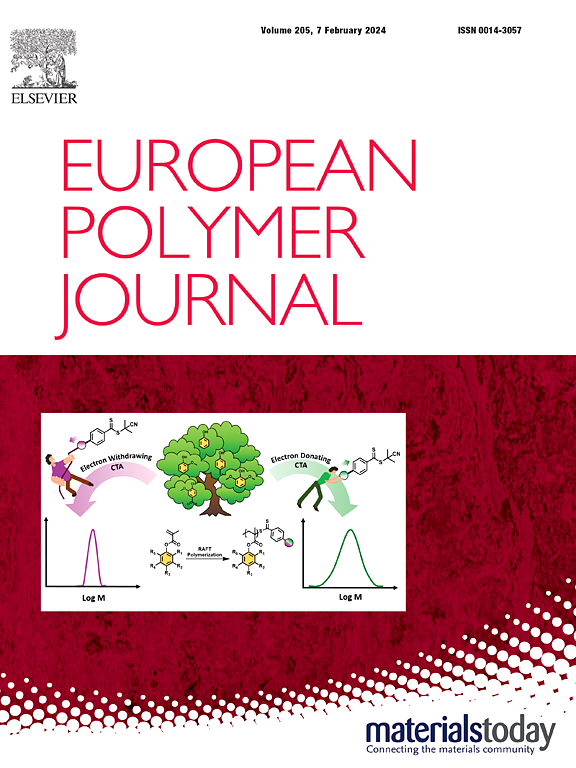Reactive oxygen species-responsive nanocomposite hydrogels for accurate drug delivery and localized PDT/PTT/chemo synergistic cancer therapy
IF 5.8
2区 化学
Q1 POLYMER SCIENCE
引用次数: 0
Abstract
Intratumor local drug delivery systems using injectable hydrogels have received considerable attention due to sustained, controllable drug delivery at target tumor sites and reduced adverse effects of systemic exposure to the drug. To maximize cancer therapeutic efficiency, this study focused on cytotoxic reactive oxygen species (ROS)-cleavable injectable hydrogels that can more accurately control drug delivery as well as photodynamic therapy (PDT)/photothermal therapy (PTT) synergistic combination therapy. Thermo-responsive poly(N-isopropyl acrylamide) (PNIPAAm)-based injectable hydrogels were synthesized using a thioketal crosslinker vulnerable to bond breakage by ROS. In addition, PNIPAAm-based injectable nanocomposite hydrogels containing photosensitizer (PS)-conjugated gold nanorods (GNRs) as a photothermal factor and 1-methyltryptophan (1MT) as a model drug were prepared. PNIPAAm-based injectable nanocomposite hydrogel exhibited a lower critical solution temperature (LCST) in the range of 33.6–36.3 °C, allowing injection through a syringe at room temperature. However, a gel state was achieved through phase transition at a body temperature of 37 °C. ROS generation from PNIPAAm-based injectable nanocomposite hydrogel was controlled by adjusting the feed amount of PS-conjugated GNRs and the 670 nm laser intensity. These hydrogels crosslinked with ROS-cleavable thioketal crosslinker exhibited selective degradation and drug release behavior. In addition, a PNIPAAm-based injectable nanocomposite hydrogel containing GNRs as a photothermal factor and chlorin e6 (Ce6) as a PS showed a PDT/PTT synergistic effect upon laser irradiation. These results indicate that this ROS-sensitive nanocomposite hydrogel would be highly efficient both as an accurate drug delivery platform and as a combinational cancer therapeutic system of localized PDT and PTT.

求助全文
约1分钟内获得全文
求助全文
来源期刊

European Polymer Journal
化学-高分子科学
CiteScore
9.90
自引率
10.00%
发文量
691
审稿时长
23 days
期刊介绍:
European Polymer Journal is dedicated to publishing work on fundamental and applied polymer chemistry and macromolecular materials. The journal covers all aspects of polymer synthesis, including polymerization mechanisms and chemical functional transformations, with a focus on novel polymers and the relationships between molecular structure and polymer properties. In addition, we welcome submissions on bio-based or renewable polymers, stimuli-responsive systems and polymer bio-hybrids. European Polymer Journal also publishes research on the biomedical application of polymers, including drug delivery and regenerative medicine. The main scope is covered but not limited to the following core research areas:
Polymer synthesis and functionalization
• Novel synthetic routes for polymerization, functional modification, controlled/living polymerization and precision polymers.
Stimuli-responsive polymers
• Including shape memory and self-healing polymers.
Supramolecular polymers and self-assembly
• Molecular recognition and higher order polymer structures.
Renewable and sustainable polymers
• Bio-based, biodegradable and anti-microbial polymers and polymeric bio-nanocomposites.
Polymers at interfaces and surfaces
• Chemistry and engineering of surfaces with biological relevance, including patterning, antifouling polymers and polymers for membrane applications.
Biomedical applications and nanomedicine
• Polymers for regenerative medicine, drug delivery molecular release and gene therapy
The scope of European Polymer Journal no longer includes Polymer Physics.
 求助内容:
求助内容: 应助结果提醒方式:
应助结果提醒方式:


